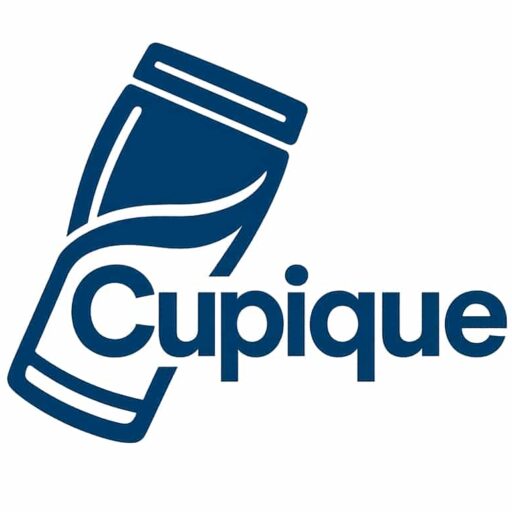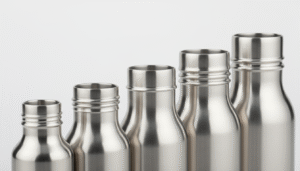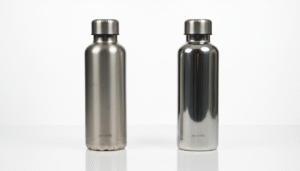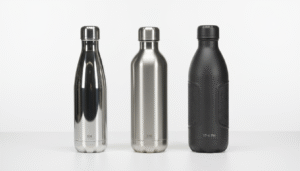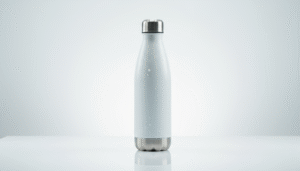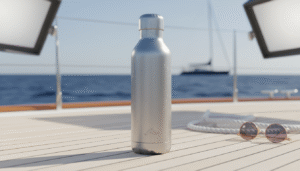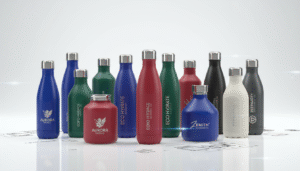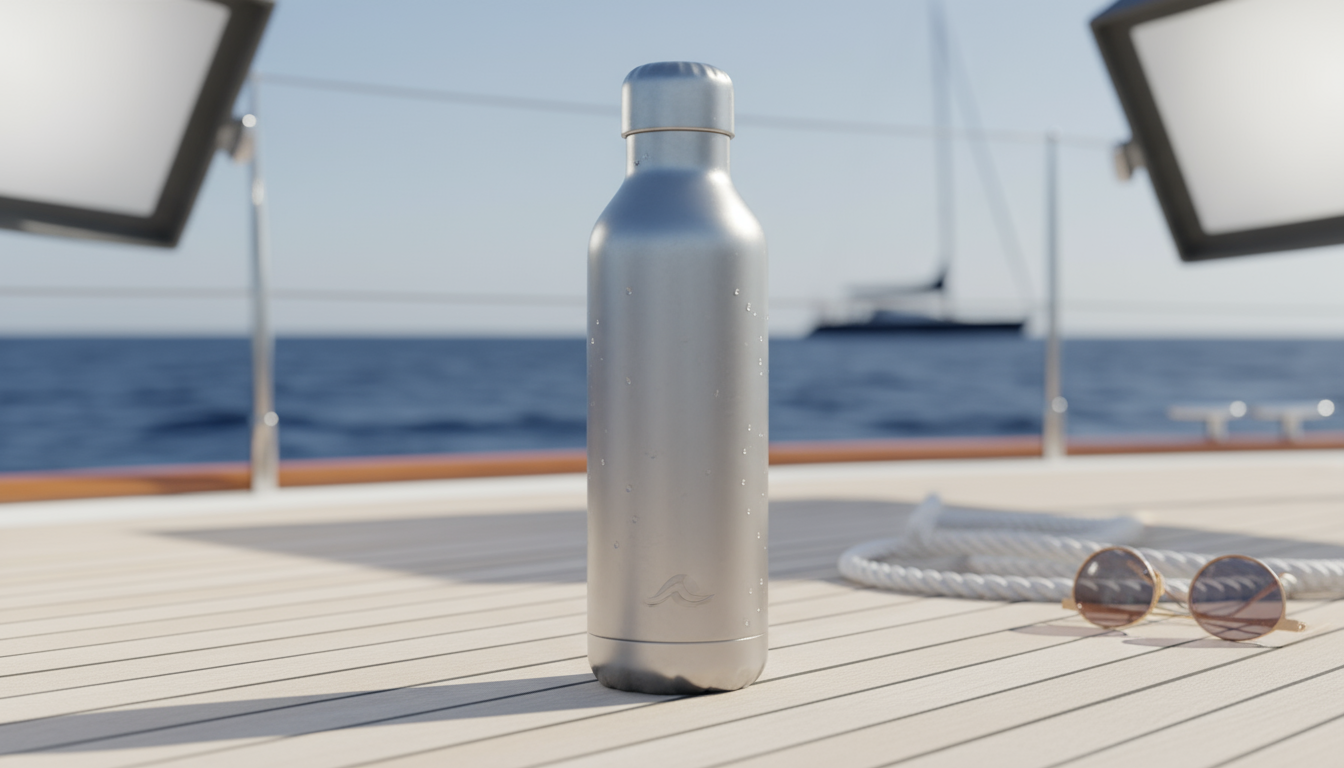
316 stainless steel offers superior corrosion resistance and marine-grade durability compared to 201, making it ideal for premium applications like acidic beverages, coastal environments, or luxury brand positioning, despite its 20-40% higher cost.
As someone who has helped hundreds of businesses navigate this exact decision at Cupique, I have seen how the wrong material choice can damage brand reputation. Let me share what I have learned about when this investment makes sense.
316 stainless steel offers superior corrosion resistance and durability compared to 201.True
The text explicitly states 316 has superior corrosion resistance and marine-grade durability.
201 stainless steel is as resistant to corrosion as 316 stainless steel.False
The text highlights 316's *superior* corrosion resistance over 201, not equal.
What Are the Key Differences in Composition Between 304, 316, and 201 Stainless Steel
Understanding these materials starts with their chemical makeup. Each grade serves different purposes in custom drinkware manufacturing.
304 stainless steel contains 18% chromium and 8% nickel, 316 adds 2-3% molybdenum for enhanced corrosion resistance, while 201 substitutes manganese for nickel to reduce costs but compromises durability.
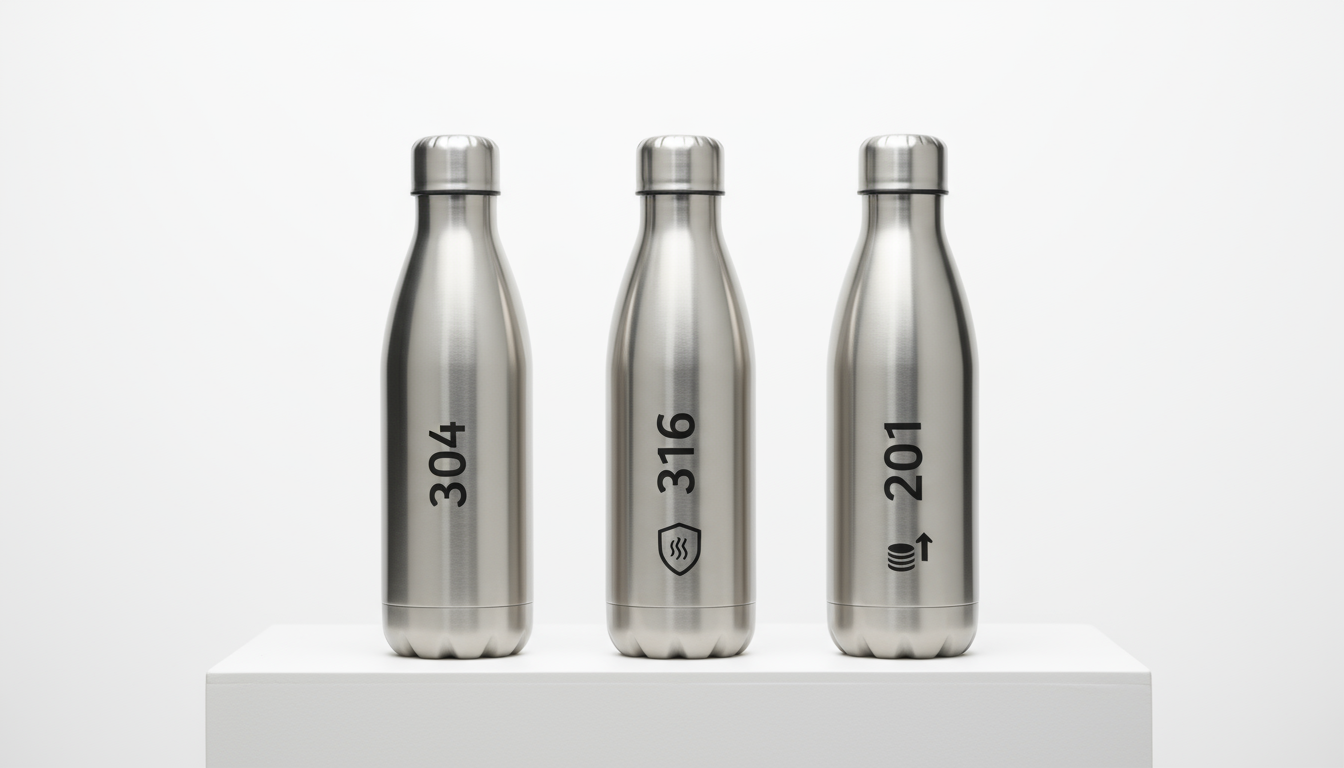
The composition differences create distinct performance profiles that directly impact your purchasing decision. I work with these materials daily at our factory, and the differences become clear when you understand what each element does.
Chemical Composition Breakdown
| Steel Grade | Chromium | Nickel | Molybdenum | Manganese | Key Properties |
|---|---|---|---|---|---|
| 201 | 16-18% | 3.5-5.5% | 0% | 5.5-7.5% | Cost-effective, limited durability |
| 304 | 18-20% | 8-10.5% | 0% | ≤2% | Industry standard, balanced performance |
| 316 | 16-18% | 10-14% | 2-3% | ≤2% | Premium grade, superior corrosion resistance |
The molybdenum in 316 steel is the game-changer. This expensive element creates what we call "marine-grade" protection. When I visit coastal clients, I always recommend 316 for their promotional products because regular exposure to salt air will damage lesser grades.
Performance Impact Analysis
The nickel reduction in 201 steel creates significant limitations. While it keeps costs down, the manganese substitution makes the material more prone to rust and discoloration. I have seen 201 steel products develop brown spots after just six months of regular use.
304 steel represents the sweet spot for most applications. Major brands like Hydro Flask build their entire reputation on 18/8 stainless steel, which is exactly what 304 pr1ovides. The 8% nickel content gives excellent corrosion resistance for typical beverages like water, coffee, and tea.
316 steel takes performance to the next level. The molybdenum addition specifically targets chloride corrosion, which affects products used with sports drinks, fruit juices, or in marine environments. When a yacht club orders custom tumblers, 316 steel ensures they will look pristine even after years of saltwater exposure.
316 stainless steel includes molybdenum for enhanced corrosion resistance.True
The text states 316 adds 2-3% molybdenum for enhanced corrosion resistance.
201 stainless steel offers superior durability compared to 304 and 316.False
The text explicitly states 201 substitutes manganese, which compromises durability.
Which Stainless Steel Grade Offers the Best Corrosion and Rust Resistance
Corrosion resistance directly impacts product lifespan and brand reputation. Your choice here determines whether customers recommend your brand or complain about rust spots.
316 stainless steel provides the highest corrosion resistance due to molybdenum content, followed by 304 with excellent general-purpose protection, while 201 offers minimal resistance and should be avoided for premium applications.
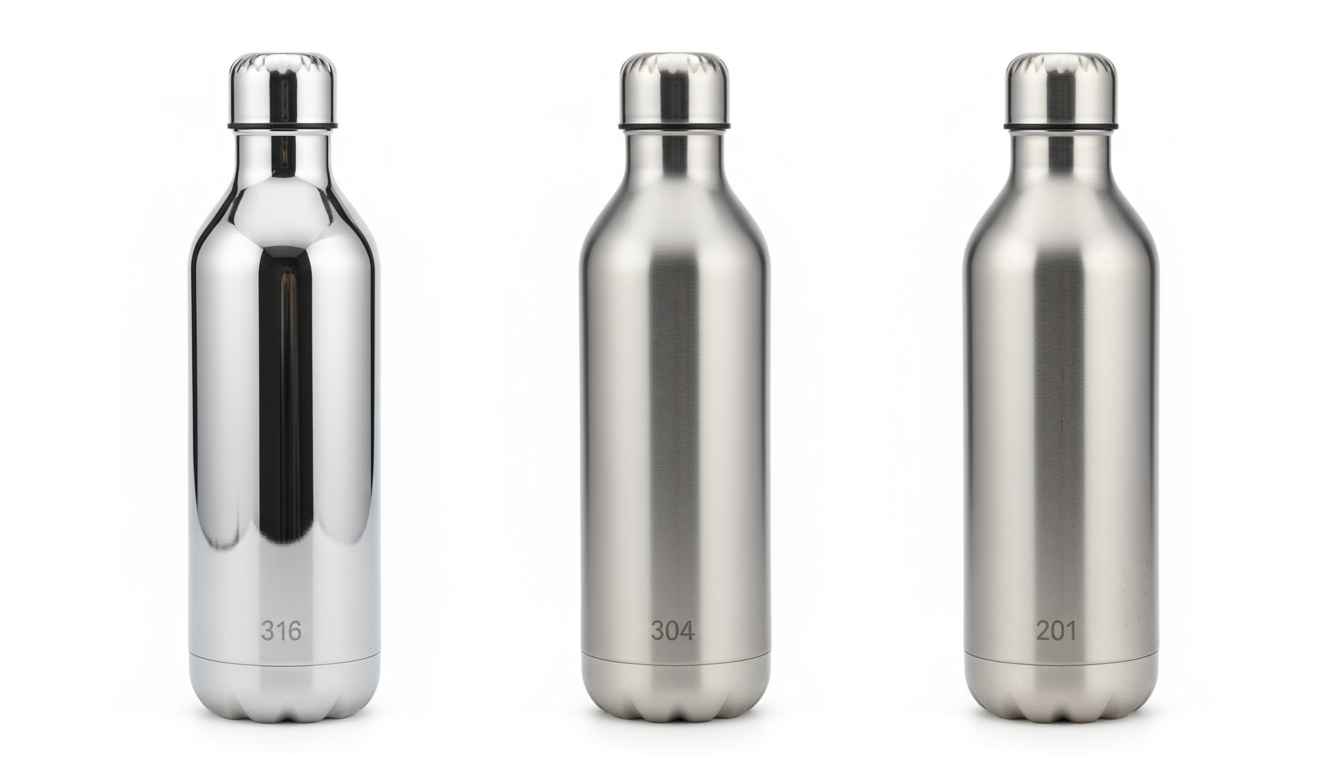
I have tested these materials extensively in our quality lab. The differences become obvious when you expose samples to various liquids and environments over time.
Corrosion Resistance Rankings
| Environment Type | 201 Performance | 304 Performance | 316 Performance |
|---|---|---|---|
| Pure Water | Good | Excellent | Excellent |
| Coffee/Tea | Fair | Excellent | Excellent |
| Citrus Juices | Poor | Good | Excellent |
| Sports Drinks | Poor | Fair | Excellent |
| Salt Water | Very Poor | Fair | Excellent |
| Chlorinated Water | Poor | Good | Excellent |
Real-World Performance Examples
I remember working with a juice company that initially chose 201 steel to save costs. Within three months, their customers started complaining about metallic taste and brown staining. We had to replace their entire inventory with 304 steel, which cost them far more than choosing the right material initially.
For coastal resorts, I always recommend 316 steel. The constant salt air exposure will cause pitting corrosion in lesser grades. One resort in Florida switched from 304 to 316 after their promotional bottles started showing rust spots within six months. The 316 replacement bottles have remained pristine for over two years.
Chemical Resistance Breakdown
The molybdenum in 316 steel specifically prevents pitting corrosion from chlorides2. This makes it essential for applications involving high-salt content beverages or environments. Sports drink companies particularly benefit from this protection because their products contain electrolytes that can attack lesser steel grades.
304 steel handles most common beverages excellently. The chromium-nickel matrix provides strong general corrosion resistance.3 However, prolonged contact with acidic drinks like tomato juice or citrus beverages can eventually cause minor pitting in 304, while 316 remains unaffected4.
316 stainless steel offers the highest corrosion resistance due to its molybdenum content.True
The text explicitly states 316 provides the highest resistance because of molybdenum.
201 stainless steel is suitable for premium applications requiring high corrosion resistance.False
The text advises avoiding 201 for premium applications due to its minimal resistance.
How Does the Cost of 316 Stainless Steel Compare to 304 and 201
Material costs significantly impact your total project budget. Understanding these differences helps you make informed decisions about where to invest your money.
316 stainless steel costs 20-40% more than 304 due to expensive molybdenum content, while 201 steel costs 15-25% less than 304, creating a clear cost-performance trade-off for bulk orders.
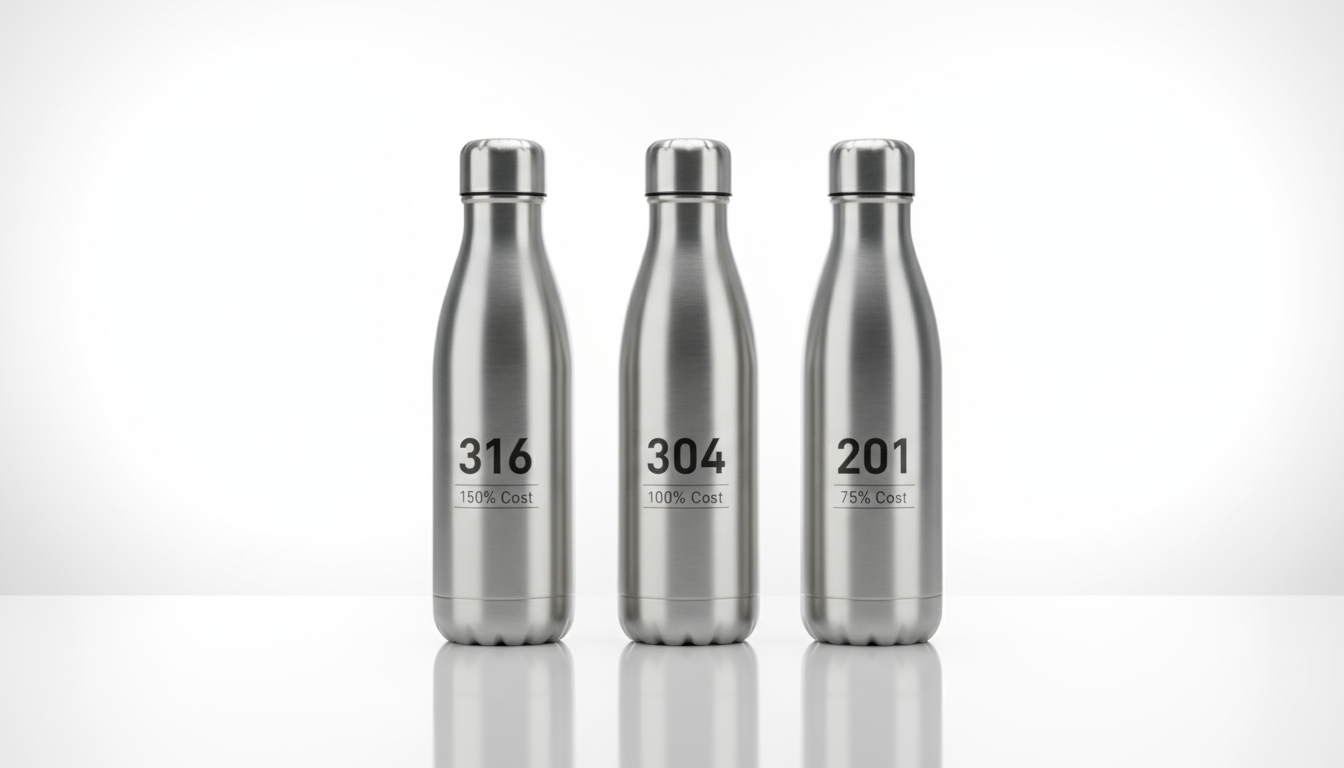
From my experience managing procurement at Cupique, these cost differences translate into real budget impacts when ordering thousands of units for corporate programs.
Cost Analysis Breakdown
| Steel Grade | Relative Cost | Price Impact per 1000 Units | Best Use Cases |
|---|---|---|---|
| 201 | 100% (baseline) | Saves $500-750 | Basic promotional items |
| 304 | 115-125% | Standard pricing | General corporate gifts |
| 316 | 135-165% | Adds $875-1625 | Premium/marine applications |
Budget Planning Considerations
When a client orders 5000 custom bottles, the material choice creates significant budget differences. Choosing 201 over 304 might save $3000, but the risk of product failure and brand damage far outweighs these savings. I have learned to present this as insurance rather than expense.
For premium brand positioning, the 316 upgrade often pays for itself through higher perceived value. A luxury hotel chain recently chose 316 steel for their guest amenities, specifically marketing them as "marine-grade quality." This allowed them to position the bottles as premium amenities rather than basic utilities.
Return on Investment Analysis
The molybdenum in 316 steel costs more to refine an5d process, but it prevents costly product recalls. One client faced a $50000 replacement cost when their 201 steel promotional bottles developed rust spots. The 316 upgrade would have cost only $8000 additional upfront.
304 steel provides the best value for most applications. Major brands prove this daily - Hydro Flask, RTIC, and similar companies build successful businesses on 304 steel performance.6 The key is matching material grade to actual performance requirements rather than over-engineering or under-specifying.
316 stainless steel costs 20-40% more than 304, while 201 costs 15-25% less.True
The snippet directly states these specific percentage cost differences between the steels.
201 stainless steel is generally more expensive than 304 stainless steel.False
The text explicitly states 201 steel costs 15-25% less than 304 steel.
Which Stainless Steel Grade Is Considered the Safest for Food and Drink Products
Food safety compliance protects your customers and legal liability. Different steel grades meet varying safety standards that matter for regulatory approval and consumer confidence.
All three grades (201, 304, 316) meet basic food safety requirements when properly manufactured, but 304 and 316 offer superior safety margins and broader international certifications for professional food service applications.
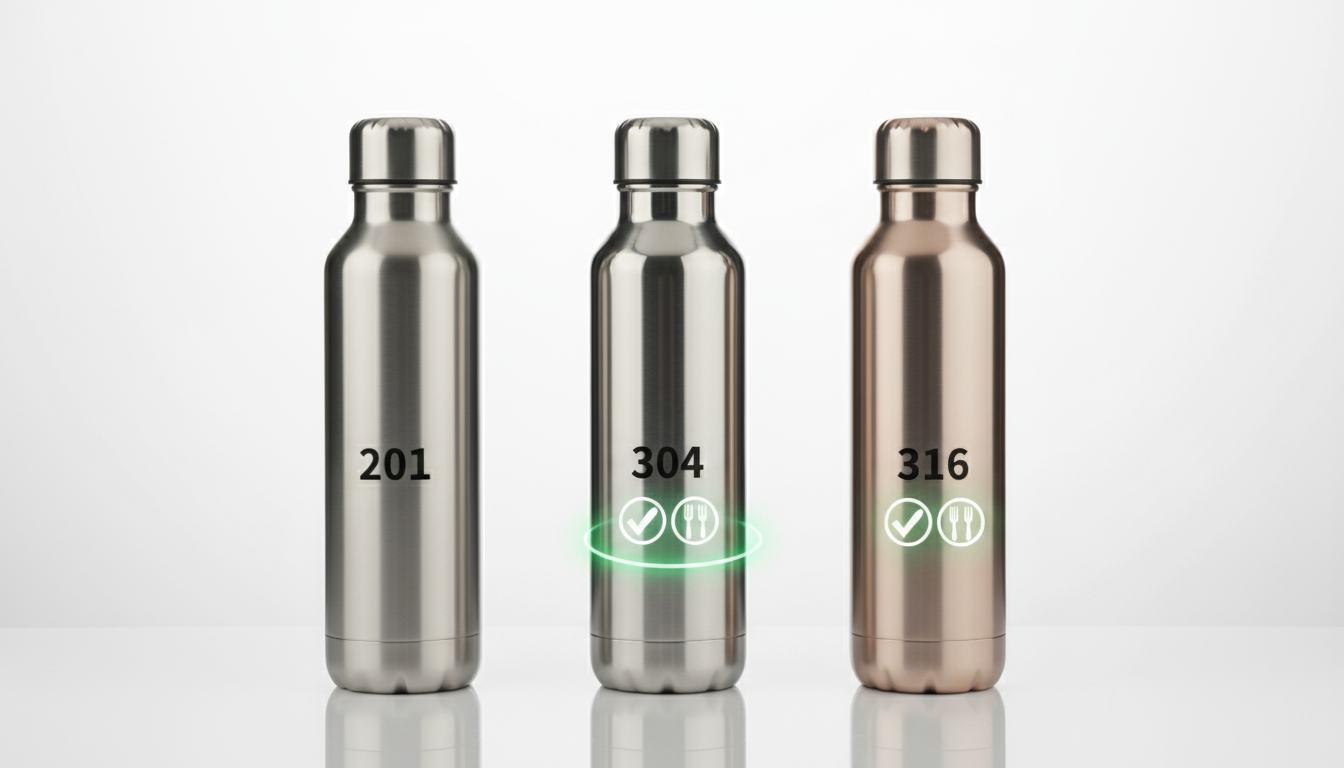
At Cupique, we maintain certifications for FDA, LFGB, and REACH compliance. The steel grade affects how easily we achieve and maintain these standards.
Food Safety Certification Matrix
| Certification | 201 Compatibility | 304 Compatibility | 316 Compatibility |
|---|---|---|---|
| FDA (USA) | Yes* | Yes | Yes |
| LFGB (EU) | Limited | Yes | Yes |
| REACH (EU) | Restricted | Yes | Yes |
| JIS (Japan) | Limited | Yes | Yes |
| GB (China) | Yes | Yes | Yes |
*201 requires more careful processing and testing
Safety Performance Differences
The nickel content differences create varying safety profiles. 316 steel provides the highest sa7fety margin because molybdenum creates additional barriers against metal ion migration into beverages. This becomes important for acidic drinks that might leach metals from inferior materials.
I have worked with pharmaceutical companies that require 316 steel specifically for safety reasons. While 304 meets general food safety standards, 316 provides the extra assurance needed for medical-grade applications or sensitive consumer groups.
Regulatory Compliance Considerations
201 steel can meet food safety standards, but requires more careful manufacturing control8. The manganese content needs precise balancing to prevent safety issues. Most premium brands avoid 201 specifically to eliminate any safety concerns and simplify compliance documentation.
304 steel represents the industry standard for food safety9. The established chromium-nickel formula has decades of proven safety data. When clients need broad international compliance, 304 provides the easiest path to approval across multiple markets.
316 steel exceeds all food safety requirements and often qualifies for medical device standards. This makes it perfect for health-conscious brands or applications involving immunocompromised users who need maximum safety assurance.
304 and 316 stainless steels offer superior safety margins for professional food service.True
The text states 304/316 provide superior safety margins and broader certifications.
201 stainless steel is unsafe for any food or drink products.False
The text states 201 meets basic food safety requirements when properly manufactured.
How Do You Choose the Right Stainless Steel for Your Specific Application
Selecting the optimal steel grade requires matching material properties to actual use conditions. This decision impacts both immediate costs and long-term customer satisfaction.
Choose 201 for basic promotional items with short lifespan, 304 for general corporate gifts and retail products, and 316 for premium applications involving acidic beverages, marine environments, or luxury brand positioning.
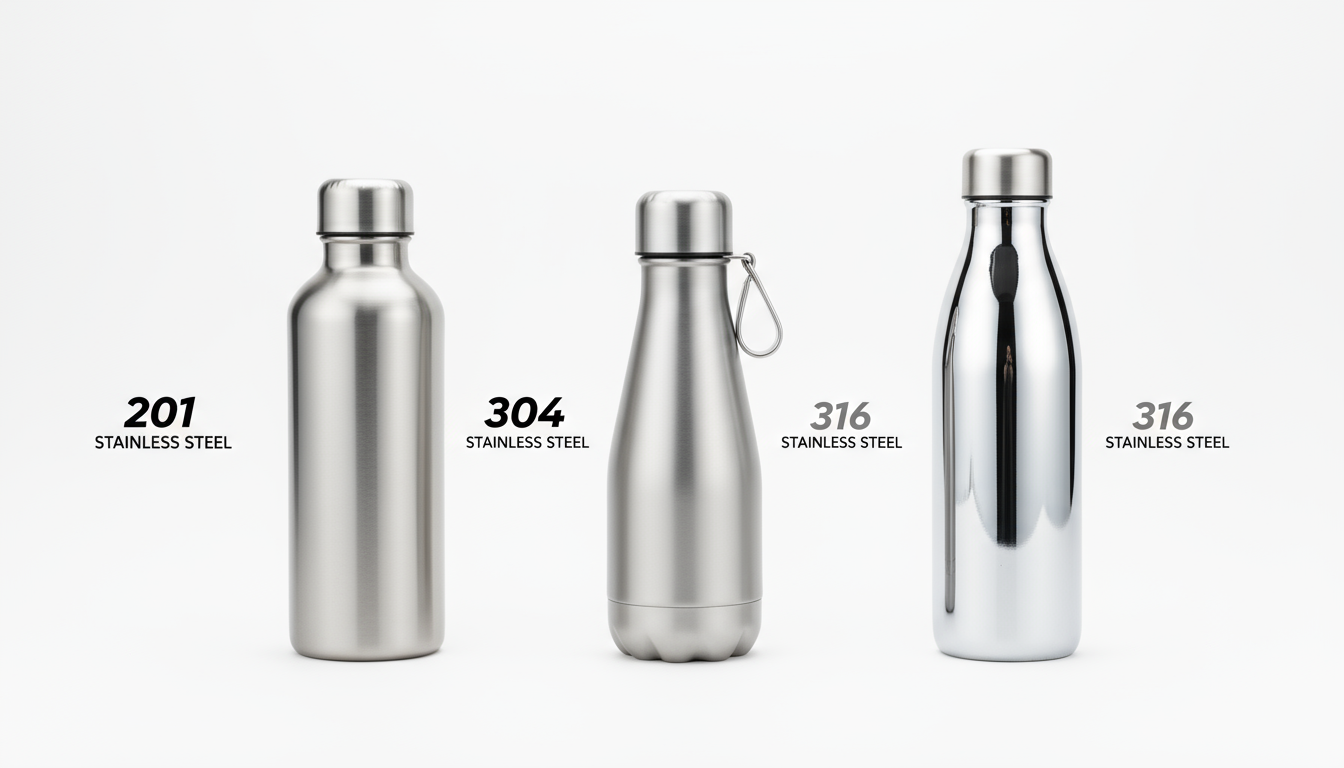
After helping thousands of clients make this decision, I have developed a systematic approach that considers budget, performance requirements, and brand positioning together.
Application-Based Selection Matrix
| Use Case Category | Recommended Grade | Key Reasoning | Budget Impact |
|---|---|---|---|
| Trade show giveaways | 201 or 304 | Cost vs. brand image balance | Lowest cost |
| Employee gifts | 304 | Durability for daily use | Standard pricing |
| Customer appreciation | 304 or 316 | Brand value investment | Premium worth |
| Retail products | 304 or 316 | Market positioning strategy | Profit optimization |
| Marine/coastal use | 316 only | Environmental protection | Essential upgrade |
| Acidic beverages | 316 preferred | Chemical resistance | Performance critical |
Decision Framework Process
Start by identifying your primary use environment. If the bottles will be used near salt water, exposed to sports drinks regularly, or need to convey premium quality, 316 steel justifies its cost premium. The molybdenum protection becomes essential rather than optional.
For general office use, employee appreciation gifts, or typical promotional campaigns, 304 steel provides excellent performance at reasonable cost. This grade handles coffee, tea, water, and most common beverages without any durability concerns.
Brand Positioning Strategy
The steel grade becomes part of your marketing message. I have seen companies successfully market 316 steel as "marine-grade" or "medical-grade" quality, justifying premium pricing and enhancing perceived value. This works particularly well for outdoor brands, health-focused companies, or luxury market segments.
Budget-conscious applications can use 201 steel effectively, but only for short-term promotional use where longevity is not expected. The key is setting appropriate customer expectations and avoiding situations where product failure damages brand reputation.
Quality Assurance Considerations
When working with any supplier, verify their material certifications and testing capabilities. At Cupique, we provide mill certificates for all steel grades and conduct regular quality audits. The steel grade affects manufacturing complexity, so choose suppliers with proven experience in your selected material.
Specific stainless steel grades are recommended for different application requirements.True
The snippet assigns 201, 304, and 316 grades to distinct use cases.
Stainless steel grade 201 is ideal for marine environments and acidic liquids.False
Grade 316 is specified for marine and acidic uses, while 201 is for basic items.
Conclusion
316 stainless steel offers superior corrosion resistance and premium positioning advantages over 201, but 304 provides the optimal balance of performance and cost for most B2B applications.
-
Defines 304 stainless steel, affirming its role in brand reputation. ↩
-
Details molybdenum's role in 316 steel's chloride corrosion resistance. ↩
-
Explains chromium-nickel matrix corrosion resistance. ↩
-
Explains why 316 steel resists acid better than 304. ↩
-
Defines molybdenum, the costly element preventing recalls in 316 steel. ↩
-
Market research validates strong demand for stainless steel containers. ↩
-
Explains 316 steel's superior safety from molybdenum's ion barrier. ↩
-
FDA outlines food contact material safety, relevant to steel manufacturing controls. ↩
-
Explains 304 steel's composition and common uses, supporting its industry standard status. ↩
